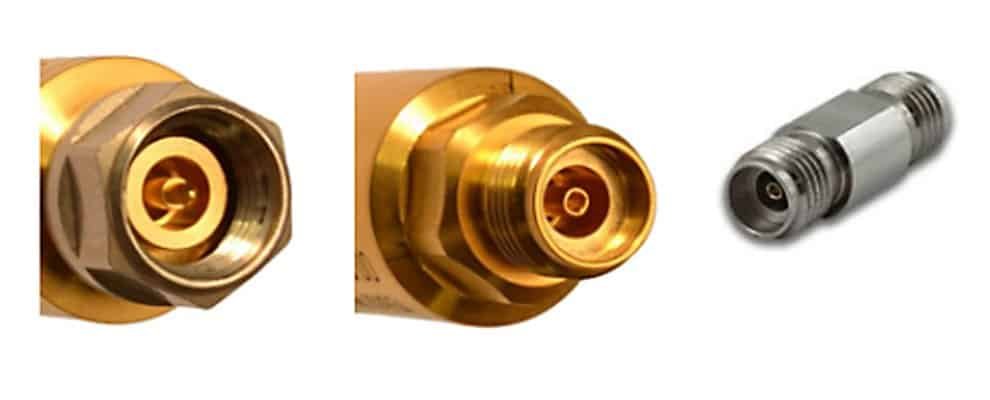In the fast-evolving world of RF technology, the 2.92 mm RF connector is a standout choice for high-frequency applications. Known for its precision and reliability, this connector is widely used across industries. But what exactly is the frequency range of a 2.92 mm RF connector? This article explores this question, analyzes its capabilities, and provides clear answers to help businesses choose the right solution for their needs.
What is a 2.92 mm RF Connector?
The 2.92 mm RF connector, often referred to as the K connector, is a coaxial connector engineered for microwave frequencies. Its air dielectric design ensures low signal loss, while its compatibility with SMA and 3.5 mm connectors adds versatility. Whether paired with a 2.92 mm cable or a 2.92 mm coaxial cable, this connector excels in high-frequency environments.
The Problem: Defining the Frequency Range
When selecting RF components, understanding frequency range is critical. For professionals integrating a 2.92 mm connector cable or 2.92 mm coax cable into their systems, the key question arises: What frequency range can this connector reliably support? Without this knowledge, choosing the right connector for specific applications becomes challenging.
Analyzing the Frequency Capabilities
The 2.92 mm RF connector is designed to operate from DC to 40 GHz with mode-free performance. This means it maintains signal integrity across this range without interference from unwanted modes. Some high-quality versions, often used in advanced 2.92 mm rf cable assemblies, can even reach up to 46 GHz. This extended range depends on factors like cable quality, connector precision, and environmental conditions.
- Standard Range: DC to 40 GHz – Ideal for most high-frequency applications.
- Extended Range: Up to 46 GHz – Achievable with premium assemblies and optimal conditions.
The connector’s compatibility with SMA and 3.5 mm types enhances its flexibility, though pairing it with a matching 2.92 mm cable assembly ensures the best results. Its low VSWR (Voltage Standing Wave Ratio) and excellent return loss further support its high-frequency performance.
Key Factors Influencing Performance
Several elements affect how well a 2.92 mm RF connector performs within its frequency range:
- Cable Quality: A high-grade 2.92 mm coaxial cable reduces signal loss.
- Connector Precision: Tight tolerances ensure consistent performance up to 40 GHz.
- Mating Compatibility: While it works with SMA connectors, using a 2.92 mm coax cable optimizes outcomes.
Solving the Question: The Frequency Range Answer
So, what is the frequency range of a 2.92 mm RF connector? The answer is straightforward: it reliably operates from DC to 40 GHz, with some configurations extending to 46 GHz. This makes it a top choice for applications requiring high bandwidth and minimal distortion, such as:
- Test Equipment: Precision testing up to 40 GHz.
- Aerospace Systems: Reliable radar and communication links.
- 5G Networks: Supporting next-gen wireless infrastructure.
For businesses assembling a 2.92 mm cable or sourcing a 2.92 mm connector cable, this range ensures compatibility with cutting-edge technology.
Why This Matters for Your Business
Choosing the right RF connector can impact system performance and cost-efficiency. The 2.92 mm RF connector offers:
- High Performance: Handles frequencies up to 40 GHz with ease.
- Versatility: Works with various 2.92 mm rf cable types.
- Durability: Built for repeated use without degradation.
When paired with a well-designed 2.92 mm cable assembly, it delivers consistent results in demanding environments.
Conclusion
The 2.92 mm RF connector’s frequency range of DC to 40 GHz, with potential up to 46 GHz, positions it as a leader in high-frequency RF solutions. Whether you’re building a 2.92 mm coaxial cable system or integrating it into advanced applications, this connector meets the needs of B-end users seeking reliability and precision. Contact us today to explore how our 2.92 mm cable assemblies can enhance your projects and drive performance.

 Coaxial Cable Assembly
Coaxial Cable Assembly Microwave Test Cable
Microwave Test Cable Coaxial RF Connector
Coaxial RF Connector Coaxial RF Adapter
Coaxial RF Adapter Coaxial RF Termination
Coaxial RF Termination Coaxial RF Test Probe
Coaxial RF Test Probe Coaxial RF Attenuator
Coaxial RF Attenuator RF Switch
RF Switch Coaxial RF Power Dividers
Coaxial RF Power Dividers